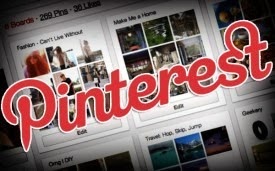These are some great examples:
Marketing Me
Monday, October 7, 2013
Guerrilla Marketing
Take a look at the Guerrilla Blog. The blog takes a closer look at guerrilla marketing and non traditional marketing concepts from around the world. As marketers we need to think outside the box and see opportunities everywhere.
These are some great examples:
These are some great examples:
Friday, September 27, 2013
Crowdsourcing: There is no limit
Research and Development is expensive, time
consuming and you are never assured of success...how to overcome this dilemma?
Crowdsourcing seem to be the answer and it’s not only small, start-up companies
that are utilising this technique. Even companies that play in the big league,
such as Oreo, are using crowdsourcing.
Crowdsourcing
is tapping into the concepts of collective intellect (the shared, group
intellect that emerges from the collaboration of many individuals) and Synergy
(the whole is greater than the sum of the parts). Crowdsourcing is the practice
of obtaining ideas or content from large groups of people, mostly from an
online community rather than from more traditional sources. The process
consists of each contributor adding a small portion to the greater result.
Oreo recently concluded their ‘Daily Twist’ Campaign which
used crowdsourcing .The brand asked its Twitter followers and Facebook fans to
offer ideas for the final ad. The series began with the daring gay-pride ad and
has involved consumers from the start.
Oreo’s Marketing Director, Cindy Chen, stated that
engagement with Facebook posts increase with 110% on average. The key to the
success of the campaign was the high level and continuous brand-audience
engagement. Consumers loved the ideas of
seeing their own ideas being used in the campaign.
I love the Oreo’s campaign. It engages the consumer, making
them feel like an important part of the brand and it’s hard to imagine that the
same level of creativity would have been reached if they had used traditional
methods.
Here are some examples of the Daily Twist campaign:
To see more of the campaign: Daily Twist
Thursday, September 26, 2013
Pinterest: The Rising Star of Social Media
Pinterest: No longer just for pinning your dream
closet, or that diet plan you’ve been meaning to start. Companies are also
climbing on the bandwagon and making the most of this platform. Pinterest
is being called social media’s rising star, and rightly so. Pinterest is
beating Youtube, Reddit, Google+, LinkedIn and Myspace when it comes to traffic
statistics.
Pinterest is not only influencing marketing but
also web design. Consumers love the
simplicity and non-linear design of the website and more and more websites are
copying the look. Although Pinterest didn’t
invent the look, it did help make it popular.
Companies like Tailwind (formerly Pinleague) are
now utilising Pinterest as a Marketing platform for brands, agencies,
e-commerce, and publishers. They teach businesses how to:
- · Target Pinners
- · Pin the right pins
- · Grow traffic and influence
- · Create viral categories and boards
- · Use analytical tools to leverage brand awareness
This adds
a new element to social and digital marketing. Consumers are moving away from
more ‘traditional’ social media such as Facebook and Twitter and are now
embracing other platforms such as Pinterest and Instagram. If businesses don't
keep on evolving their marketing efforts they will miss out and get left
behind.
For more information on how to use Pinterest:
- 32 Do's and Dont's for your B2B Pinterest Strategy
- 8 Strategies for Launching a Brand Presence on Pinterest
- Conquering Pinterest (Infographic)
Tuesday, September 17, 2013
Functional Marketing: IBM's Ads With a Purpose
Most brands talk about making a difference, doing something that is useful, helps the communities in which they market their products. However they usually refer to apps or other digital or social programs. IBM took the more practical approach. IBM took the idea of utility and applied it to outdoor ads that double as functional surfaces: a bench, a shelter from the rain, a ramp. The campaign, 'People For Smarter Cities Project, was created in collaboration with Ogilvy & Mather France. The goal is to encourage forward-thinking citizens and local leaders to consider how to improve their cities and make them 'smarter'.
The campaign pushes the boundaries of what is expected from brands and pressures other brands to follow IBM's example. Change is happening faster and faster. Brands need to step it up if they want to keep up with the competition. Technology, empowered consumers and innovative advertisers are redefining how advertising is created and consumed. Marketing is continuously evolving and marketers need to keep finding new and creative ways of breaking through the clutter and attracting consumers' attention and making an impact.
Here are some examples of IBM's Ads With a Purpose
Sunday, September 15, 2013
The Lovemarks Effect: Book Review
The Lovemarks Effect: Winning in The Consumer Revolution (powerhouse Books, 2006) is written by the CEO Worldwide of Saatchi & Saatchi, Ideas Company, Kevin Roberts. Roberts first introduced the term Lovemarks in 2000 and wrote Lovemarks: The Future Beyond Brands in 2004. The Lovemarks Effect is the follow-up book in which he uses insights from consumers, owners, designers, marketers and innovators to illustrate the potential, impact and power of Lovemarks.
The book addresses key issues concerning the consumer revolution, Lovemarks and what Roberts calls the Attraction Economy. The book explores the changes that has occurred in the consumer mind:
“the new consumer no longer willing to passively
accept whatever comes their way from producers”
Consumer needs and expectations changed and Lovemarks are the answer to their needs. The book starts by explaining where Lovemarks began, the key aspects that are used to build Lovemarks and a step-by-step guide on how to create your own Lovemark.
Roberts also describes the Attraction Economy and explains how one should attract the consumer rather than just get their attention.
The book contains real-world examples from consumers and companies that tells great stories about popular Lovemarks such as Chanel No.5, Crayola crayons, Benetton, Ben & Jerry’s and many more. This really helps to illustrate the power behind the Lovemarks theory.
The book was a real pleasure to read. The book not only provides the reader with great practical advice, but makes it fun. The stories that are told from so many different perspectives and fields, spanning across the globe, helps the reader to gain valuable insight into the world of Lovemarks. The book is written in a conversational style which makes the book easy to read and understand. The presentation is colourful and beautifully illustrated in such a way that it draws the reader in and engages with them.
The Lovemarks Effect is a must read book for all, from the Lovemarks aficionado to the layman. The Lovemarks Theory can be applied to all fields and industries as the Consumer Revolution applies to all industries and therefore everyone needs to start thinking differently about their products and brands. The consumer needs more and Lovemarks is the answer to the problem. In a world where consumers are constantly bombarded with information and options, brands need to step it up to break through the clutter. Building a Lovemark will provide brands with that extra fighting power that will keep them alive.
Friday, September 13, 2013
Lovemarks
In the previous post the term Lovemarks was used. Here is a simple and easy to understand illustration of what Lovemarks are.
Lovemarks are the future beyond brands. Consumers have come to expect more from products and services. It is no longer just good enough to have great performance. Consumers have a deeper need that products and services have to satisfy. The answer is Lovemarks. Lovemarks reach your heart as well as your mind by creating an intimate, emotional connection that you just can’t live without. Lovemarks are about building a relationship with consumers, it’s not just a transaction. True Lovemarks are not owned by the companies who run them, but the consumers who love them. Lovemarks inspire Loyalty beyond Reason.
Lovemarks consists of 3 elements:
Mystery. Sensuality. Intimacy.
Mystery draws together stories, metaphors, dreams and symbols. It adds to the complexity of relationships and experiences because people are drawn to what they don’t know.
Sensuality keeps the five senses on constant alert for new textures, intriguing scents and tastes, wonderful music. Sight, hearing, smell, touch, taste.
Intimacy means empathy, commitment and passion. These close connections win intense loyalty. Without Intimacy people cannot feel they own a brand, and without that conviction a brand can never become a Lovemark.
Personal Branding for Dummies
Who are you? Start by identify your passions, interests and capabilities. Discovering your brand is about understanding what you want to do in life, setting goals for yourself and having a personal brand mission, vision and brand statement which you promote.
2. Create your Brand
Personal branding is an investment in your future. Therefore it is important to take time to create your personal brand. Think carefully about what you want your brand to be and how others will perceive you and your brand.
3. Promote your Brand
Creating a personal brand won’t help you if nobody knows about you. Choosing channels to promote your brand needs to be considered carefully. The channels used need to compliment your personal brand. Your CV, business card and personal style all work together to promote your personal brand. An example of this would be your CV. Your CV represents you and what you stand for. Make sure the style and format of your CV is suited for the job you apply for.
4. Get Creative
Starting a blog or a website is a good way to self-brand online. It is cheap, inexpensive and fun. It is a way to express your thoughts, share your experiences and build your brand while making people aware of your personal brand in a way that is credible and trustworthy.
5. Social Media
Don’t just sign up to be there. Social media is there to get connected, so use it to its full potential. Get involved. Be active. Share.
6. Tell Great Stories
Treat your personal brand as a lovemark. Inspire people by sharing your ideas and stories. Showing others your personality will draw them in. Don’t be scared to open up to people.
7. Offer Something of Value Review your skills and promote those that are the most valuable to others. While it is important to highlight your most relevant and marketable skills, don’t just tell them what you can do. Show them how they can benefit from them.
8. Don't Omit Crucial Information
Don’t be shy to promote yourself. Part of building a personal brand is about showcasing your skills and attributes.
9. No Mistakes
You are human and that means you make mistakes. However by paying attention to detail you can eliminate those mistakes. Mistakes can undo all the hard work you put into building your brand. Remember every aspect is on display. Be sure everything is in order.
10. Dare to Be Different
Personal branding is all about standing out. You need to be and do something different. Not everyone will like it, you may be judged, but don’t be scared to try. If you fail, learn from your mistakes and try again. It is part of growing as a person and building your brand.
Subscribe to:
Comments (Atom)

















.gif)






